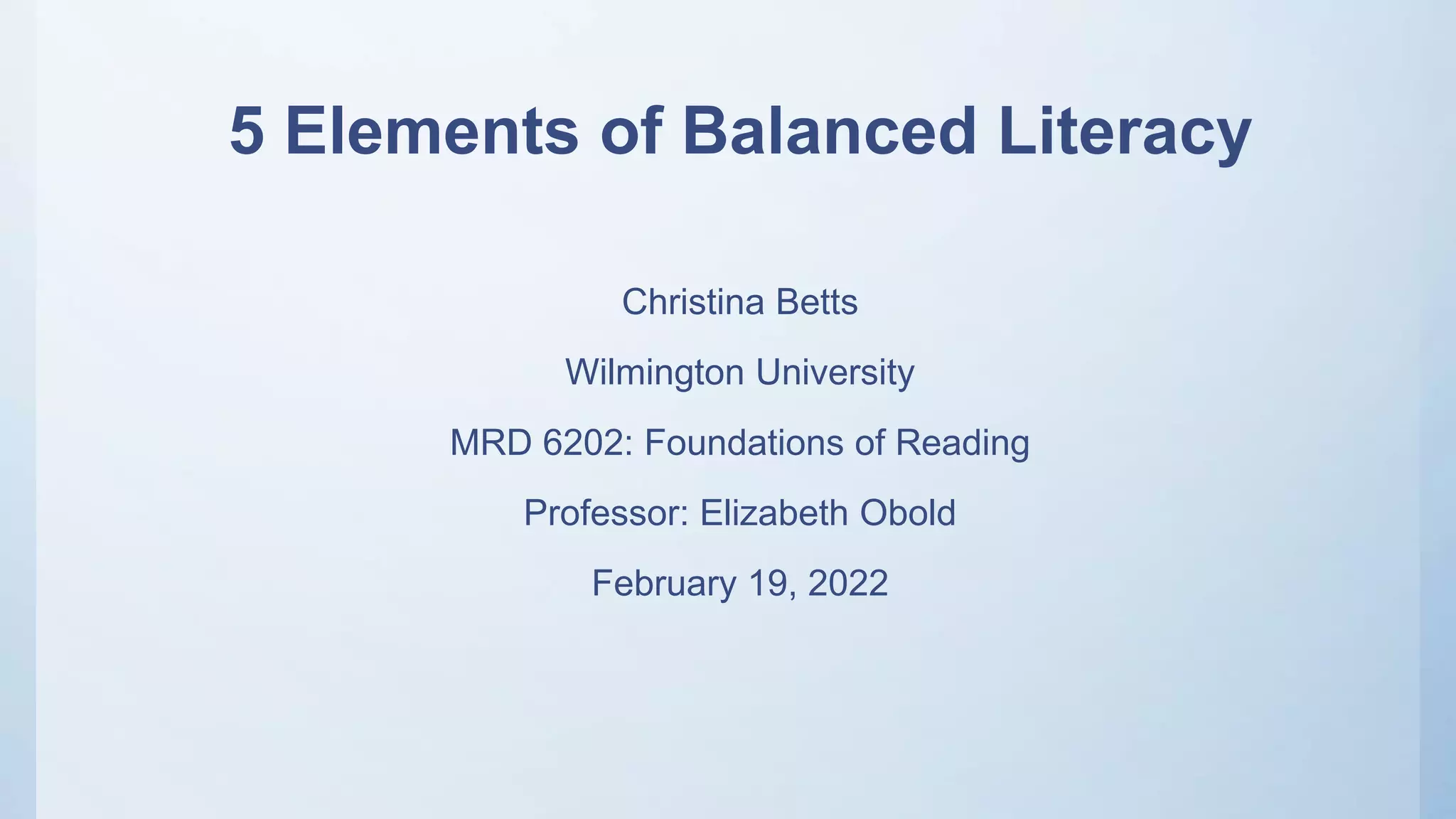The document outlines the five elements of balanced literacy: phonemic awareness, phonics, fluency, vocabulary, and comprehension, as identified by the National Reading Panel. It provides detailed strategies for teaching and assessing each component, emphasizing the interconnection and systematic approaches necessary for effective reading instruction. Additionally, it includes instructional resources and assessment methods to support educators in developing these essential literacy skills.































![Resources
Faulkner, H. J., & Levy, B. A. (1999). How text difficulty and reader skill interact to produce differential reliance on word and content overlap in reading transfer. Journal of
Experimental Child Psychology, 58, 1-24.
K12 Reader (2012). Effective Strategies for Teaching Phonemic Awareness Retrieved from https://www.k12reader.com/effective-strategies-for-teaching-phonemic-awareness/
McEwan, E.K. (2009) Teach them all to read: Catching kids before they fall through the cracks. (2nd ed.). Thousand Oaks, CA: Corwin, Press.
National Institute of Child Health & Human Development (2002). Report of the National Reading Panel. Teaching children to read: Findings and Determinations of the National
Reading Panel by Topic Areas https://www.icyte.com/saved/www.nichd.nih.gov/685157?key=68c386239799 96aecc7e737 51219d5
3c5d60990f
Osbold, E. (2022). Fluency (Week 3): Teach them All to Read Fluency [PowerPoint slides]. Wilmington University Foundations of Reading Blackboard: https://wilmu.instructure.com
Reading Rockets (2021). Phonological and Phonemic Awareness: In Depth Retrieved from https://www.readingrockets.org/teaching/reading101-course/modules/phonological-
and-phonemic- awareness/in-depth](https://image.slidesharecdn.com/5elementsofbalancedliteracysea-220219221138/75/5-Components-of-Literacy-32-2048.jpg)